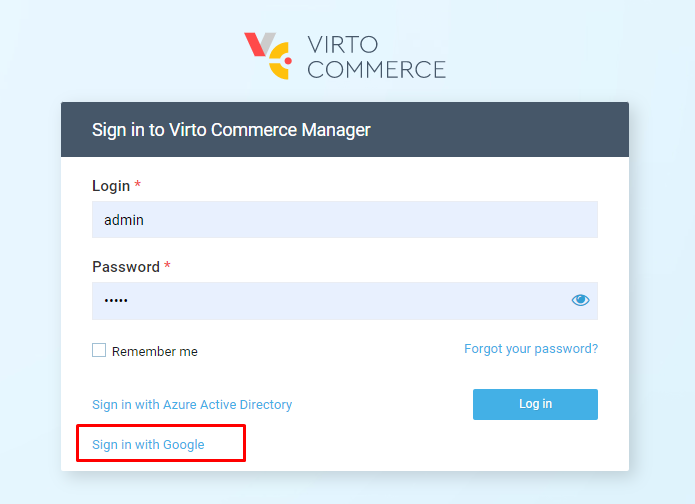Adding New SSO Provider
Using Google as an example, this tutorial will show you how to implement a new single sign-on (SSO) provider for an extension module.
Create Google OAuth 2.0 Client¶
To use Google APIs in an application with OAuth 2.0, you need authorization credentials that identify the app for Google's OAuth 2.0 server. Your applications will use such credentials to access APIs that you have enabled for that project.
To create credentials for your project:
- Go to Google API & Services.
- Create a new project and open the dashboard.
- In the OAuth consent screen of the dashboard:
- Select User Type > External and click CREATE.
- In the App Information dialog, type the app name, user support email, and developer contact information.
- Skip Scopes.
- Skip Test users.
- Review the OAuth consent screen and go back to the app dashboard.
- In the Credentials tab of the app dashboard, select CREATE CREDENTIALS > OAuth client ID.
-
Select Application type > Web application and choose a name.
-
In the Authorized redirect URIs section, select ADD URI to set the redirect URI. Run the platform using the https scheme. Otherwise, the SSO won't work.
Note
- If your platform is running on a local machine, put
https://localhost:10645/signin-google.
- If your platform is running on a local machine, put
-
Click CREATE.
- Save Client ID and Client Secret to use them in the module.
Configure Google Sign-in¶
Store Google Client ID, secret values and other sensitive settings in KeyVault Storage. In our example, we use the appsettings.json configuration file. Add the following section to the configuration:
"Google": {
"Enabled": true,
"AuthenticationType": "Google",
"AuthenticationCaption": "Google",
"ClientId": "<your Client ID>",
"ClientSecret": "<your Client Secret>",
"DefaultUserType": "Manager"
}
Add Module Extensions¶
- Add the Microsoft.AspNetCore.Authentication.Google v6.0 and the latest version of VirtoCommerce.Platform.Security packages to .web project of the custom extension module.
-
Add the basic GoogleOptions.cs class.
-
Add the GoogleExternalSignInProvider.cs class. The IExternalSignInProvider interface describes the external provider custom behavior.
public class GoogleExternalSignInProvider : IExternalSignInProvider { private readonly GoogleOptions _options; public bool AllowCreateNewUser => true; public int Priority => 200; public bool HasLoginForm => false; public GoogleExternalSignInProvider(IOptions<GoogleOptions> options) { _options = options.Value; } // Use this method to retrieve the username claim public string GetUserName(ExternalLoginInfo externalLoginInfo) { return externalLoginInfo.Principal.FindFirstValue(ClaimTypes.Email); } // Use this method to get the default user type that'll be assigned to a new user public string GetUserType() { return _options.DefaultUserType; } } -
Configure Google authentication by adding the following code to the module.cs Initialize method:
var googleAuthEnabled = Configuration.GetValue<bool>("Google:Enabled"); if (googleAuthEnabled) { // add options var optionsSection = Configuration.GetSection("Google"); var options = new GoogleOptions(); optionsSection.Bind(options); serviceCollection.Configure<GoogleOptions>(optionsSection); // add app builder google sso var authBuilder = new AuthenticationBuilder(serviceCollection); authBuilder.AddGoogle(googleOptions => { googleOptions.ClientId = options.ClientId; googleOptions.ClientSecret = options.ClientSecret; }); // register Google external provider implementation serviceCollection.AddSingleton<GoogleExternalSignInProvider>(); serviceCollection.AddSingleton(provider => new ExternalSignInProviderConfiguration { AuthenticationType = options.AuthenticationType, Provider = provider.GetService<GoogleExternalSignInProvider>(), }); }
Sign in with Google¶
- Run the platform and open Log in.
- Select Google. You will be redirected to Google for authentication.
- Enter your Google credentials. You will be redirected back to the platform:

- Click Sign in with Google.